My Favorite Hotels in Chiang Mai
• 5-star: Four Seasons
• 4-star: Maladee Rendezvous
• 3-star: JARITT NyMMANH
• New: Maladee Rendezvous
• Boutique: Inside House
• Cheap: BED
• For families: Shangri-La
• Couples: Ping Nakara
• Pool: Na Nirand
• Near airport: Smile Lanna
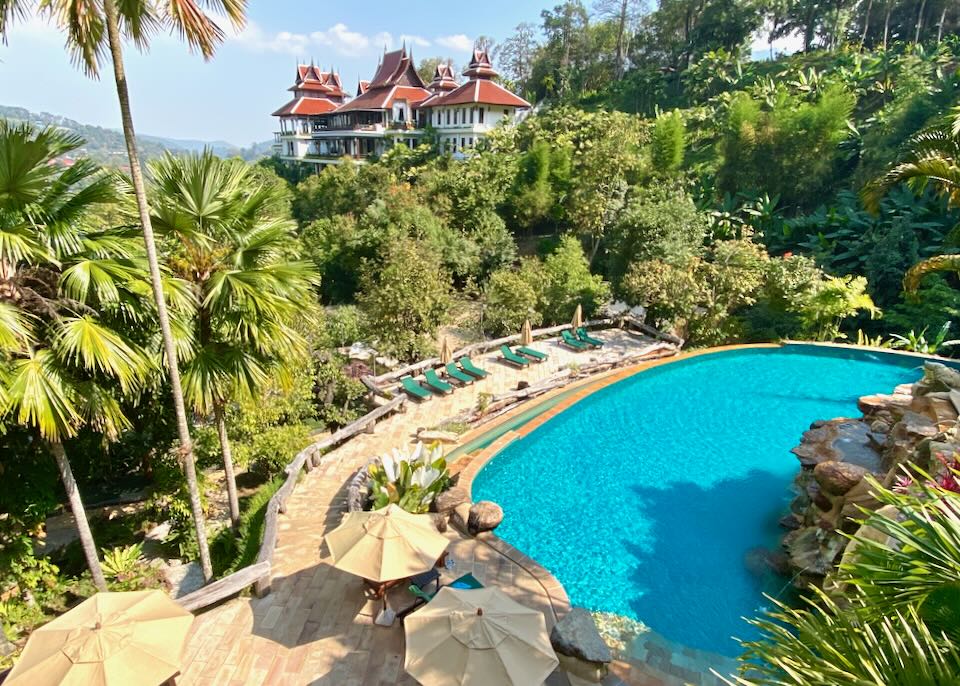
Lush views from the Panviman Resort in the hills outside of Chiang Mai.
The Best Areas to Stay in Chiang Mai
See Also
• Best Hotels in Chiang Mai
• Best Hotels for Families in Chiang MaiThailand’s second-largest city sits among hills about 700 km northwest of Bangkok. Chiang Mai is popular among foreign and Thai tourists for its culture, especially around the Old City. Others come for outdoor activities, amazing landscapes, traditional villages, palaces, temples, elephant parks, and butterfly farms.
Chiang Mai Neighborhoods
Moats surround the Old City on all four sides.
Most visitors stay within the one square kilometer of Old City. The area offers an astounding array of attractions and facilities. Due to limited space, most Old City hotels are compact and boutique-style. Ironically, Chiang Mai means “new city” in Thai.
It’s more spacious and quieter South of the Old City. With a village-like vibe, a few low-key guesthouses and trendy boutique hotels line the narrow streets. East of the Old City, are modest and inexpensive accommodations, but still comfortable and convenient.
About 1km from the eastern edge of the Old City are high-rise hotels around the Night Markets, renowned for inviting cafés, food stalls, and shops. The serene area along Ping River is worth considering, where many hotels are quaint, luxurious, and colonial-style. Across the bridge from Ping River are more accommodations. It’s still convenient to the Night Markets but a longer walk to the Old City (2km or more).
Often ignored but highly recommended is Nimmanhaemin (more commonly known as Nimman). It’s only 2km from the northwest corner of the Old City. The primarily new and boutique-style hotels are along the area’s leafy streets. It’s fashionable and vibrant yet quiet.
Outside Chiang Mai, numerous resorts and guesthouses pepper the spectacular hills in nearby villages and towns. These resorts offer abundant space, views, serenity, and fresh air. But they are about an hour from the airport or Old City.
Getting Around Chiang Mai
For such a major tourist destination, public transportation is poor. The quickest, easiest, and cheapest way to get around the city center is by ordering a car or motorbike using the ride-share app Bolt, which is just like Uber.
A songthaew taxi truck outside and opposite the Chiang Mai Gate Market along the southern perimeter road.
To rent a songthaew taxi truck with bench seating for 10-12 passengers, you have to read Thai. Fares are negotiable (often outrageous) for large groups. But don’t rent them along the bumpy roads outside the city.
Old-style tuk-tuks are less common these days. More for tourists than locals, rates are negotiable and always inflated.
Three-wheeler tuk-tuks are hard to find in Old City. They are available at the MAYA Lifestyle Shopping Center in the Nimmanhaemin district and the top-end hotels in the Night Markets area. Taxis are so rare they have to be pre-booked and won’t use a meter. The best chances of finding these and other types of transportation are outside the Chiang Mai Gate Market.
Many tourists explore the Old City during the day and visit the Night Markets after dark. Both areas are within walking distance of most hotels in Old City. Cycling around the Old City is pleasant and safe, and bikes are easy to rent from shops in the Old City. Hotels there often provide free bike rentals for guests. However, don’t venture outside the Old City walls or the Night Markets area because traffic is truly appalling elsewhere. Avoid the arterial roads parallel to the walls and moats surrounding the Old City.
Also ideal for exploration by two wheels or on two feet are the narrow lanes just south of the Old City and along both sides of Ping River. However, getting to the Ping River area involves negotiating horrendous traffic.
Safety in Chiang Mai
The only real possible hazard is getting hit by a vehicle while cycling or crossing the street. Take more caution than you probably would at home. Also, make two assumptions: everyone will ignore road rules, and pedestrians will have no rights whatsoever. Also, take the usual precautions around crowded streets, markets, and temples where bag-snatching and pick-pocketing are not uncommon. And be aware of potential political unrest that may result in mass protests, especially in Chiang Mai, home to thousands of university students. With less traffic and fewer people, the area along Ping River is safer.
The Best Places to Stay in Chiang Mai
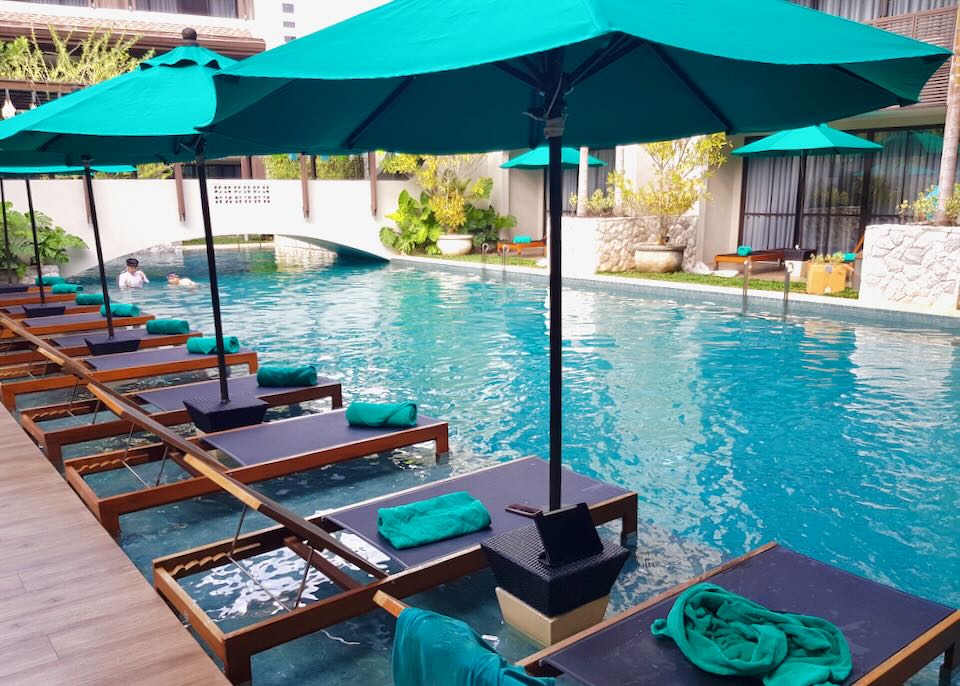
Some rooms have direct pool access at the Maladee Rendezvous Hotel.
- Best Luxury Hotels in Chiang Mai
Maladee Rendezvous • Four Seasons • Rachamankha • Tamarind Village • Meliá • Pingviman Hotel • Panviman Resort • 137 Pillars • Kantary Hills- Best New Hotels in Chiang Mai
Maladee Rendezvous • G • Meliá • Chiang Mai Gate House • Siri Village • At Gate Thaphae • Bella Nara- Best Boutique Hotels in Chiang Mai
Inside House • Ping Nakara • Makkachiva • JARITT • Na Nirand • The Bridge • At Gate Thaphae • De Chai The Deco • Art Mai Gallery • Hillsborough- Best Hotels for Families in Chiang Mai
Shangri-La • Phra Singh Village • Villa San Pee-Seua • Chala Number 6 • Kantary Hills • Meliá • Empress • Anantara- Best Hotels for Couples in Chiang Mai
Ping Nakara • Aksara Heritage • Gategaa Village • Na Nirand • The Bridge • Pingviman • U- Best Cheap/Midrange Hotels in Chiang Mai
BED • Buri Gallery House • Double Tree • Rice Barn & Rooms • Norn-Nanta • Arak Bed • Rustic Guest House • The Empire • De Lanna • SamantanBest Areas in Chiang Mai for…
- Best Neighborhood to Stay for First Timers: Nimmanhaemin (Nimman)
The inevitable crowds, traffic, noise, heat, and transportation problems can be daunting for some. In stark contrast are the shady backstreets of Nimmanhaemin, more commonly known as Nimman. This middle-class suburb just 2km northwest of the Old City offers affordable boutique-style accommodations. There are inviting bars and restaurants. At the top of the main road is the world-class MAYA Lifestyle Shopping Center. It’s a spacious and air-conditioned respite offering familiar fast-food outlets and coffee shops.- Best Area for Sightseeing: East of the Old City
The two major attractions in Chiang Mai are the Old City and the Night Markets. The old city offers history, charm, and culture, while the Night Markets are a meandering assortment of stalls, bars, and cafes. Staying just east of the Old City allows guests to easily visit both areas on foot at different times of the day or night. The main road that skirts the eastern side of the Old City is handy to Chiang Mai Zoo within the city limits and traditional villages and elephant parks outside Chiang Mai. However, public transportation is confusing and a bit pricey.- Best Area for Culture: Old City
The best area for a cultural vibe is within the walls and moats built 750 years ago in Old City. With a bonus of modern comforts and tourist amenities. The history, culture, and religion of Thailand and Chiang Mai are all interconnected. The numerous temples around the Old City provide a glimpse into the culture.- Best area for Nightlife: Nimmanhaemin (Nimman)
Within the One Nimman shopping and exhibition area are several bars and music venues such as The Sax Music House.
Chiang Mai doesn’t offer the sort of nightlife found in Bangkok or beach areas like Pattaya and Phuket. The Night Markets area sells some alcohol along the streets and food stalls, but live music is rare. The best choice for after-dark action is at Nimmanhaemin (also known as Nimman). It’s 2km northwest of the Old City. The narrow, leafy streets are packed with vibrant and inexpensive coffee shops and bars, often frequented by students from nearby Chiang Mai University. And it’s easy to find, especially on weekends, with live music at places like The Sax Music House opposite the U Nimman Hotel.
- Best Area for Food Markets: Around the Night Markets
Every late afternoon, one section of Changklan Road, about 1km east of the Old City walls, closes to cars and becomes a pedestrian market. Stalls selling clothes and souvenirs cram the street, and food stalls pack into several arcades. The main attraction is the variety of food, from tacos to biriyanis (mixed rice) and even Thai food. There are plastic seats and menus often in “Thaiglish.”The casual food stalls at the night markets.
At the Kalare Night Bazaar (opposite Le Méridien Hotel) the selection of food and drinks is as inviting as the low prices.
The best is Kalare Night Bazaar, where prices are cheap, but the quality is (usually) top-class. Other parts of the Old City and surrounding inner city also turn into markets with food stalls at certain times of the week. The most popular is the Sunday night Tha Phae Walking Street, which is opposite the namesake gate along the eastern wall of the Old City.
- Best Area for Restaurants: Nimmanhaemin (Nimman)
For a quiet meal at a reasonable price, head to the tranquil, vibrant, and almost traffic-free backstreets of Nimmanhaemin (Nimman). Students from the nearby university and an increasing number of middle-class Thais dine at most cafés here.- Best Areas with Views: Around the Night Markets and Outside of Chiang Mai
There are no high-rise hotels within the Old City and only a few in nearby areas, such as the Night Markets. But 5-star hotels such as the Meliá and Le Méridien offer extensive views of the Old City, Night Markets, Ping River, and pristine hills not too far away. Within an hour’s drive of the Old City, numerous resorts nestled in the hills provide vast, uninterrupted panoramas of misty valleys, dense forests, and traditional villages. The views are one great reason to stay outside of Chiang Mai.- Best Areas for Peace and Quiet: Outside of Chiang Mai and Nimmanhaemin (Nimman)
Giant chess at Panviman Resort.
Chiang Mai is Thailand’s second-largest city and a popular tourist attraction. It’s always heaving with people and vehicles. To escape the relentless crowds, traffic, and noise, stay at a resort among the hills outside of Chiang Mai or at a low-key but comfortable guesthouse in a nearby village. The quietest area within Chiang Mai is the leafy backstreets of Nimmanhaemin (Nimman). This stylish suburb offers many appealing cafes, bars, and hotels. Traffic is, thankfully, negligible, although planes sometimes fly low as they approach the nearby airport.
- Best Area to book Outdoor Activities: Old City
Another reason Chiang Mai is so popular with foreign and Thai tourists is the endless array of things to see and do in the nearby countryside. These include hiking, mountain biking, and rafting. There is bungee jumping, rock climbing, and quad-biking for the more adventurous. These activities and more are offered through numerous tour companies. Some are more reliable and safe than others, so always choose carefully and check online reviews. Travel agencies in the Old City also arrange outdoor activities and include transportation to and from the city.Organized tours and outdoor activities can be arranged through numerous travel agencies.
- Best Area for Organized Tours: Old City
The range of things to do is extraordinary around Chiang Mai’s countryside. There’s a boat cruise through the infamous Golden Triangle, where the borders of Thailand, Myanmar, and Laos meet. Pai village is famous for its market, hot springs, and unique traditions. The Bhubing Palace offers tours of the royal winter residence. Various national parks provide beautiful hikes. Some tours are a little tacky, and a few have questionable ethics, including some (but not all) places housing tigers, elephants, and gibbons. Arrange tours at travel agencies around the streets of the Old City where included in the cost, buses pick up and drop off customers.- Best Area for Shopping: Nimmanhaemin (Nimman) Area
There are no malls in or around the Old City. Most of the massive supermarkets and shopping centers are in the suburbs. Just across Ping River from the Old City is Rimping Supermarket Nawarat Branch. It sells wine, produce, and all sorts of tasty Western delights.Rimping Supermarket in the area just over Ping River from the Old City sells all sorts of Western delights rarely available elsewhere in Chiang Mai.
About 2km from the northwest corner of the Old City is MAYA Lifestyle Shopping Center. It’s known for its heavenly air-conditioning, range of boutiques and stalls, inexpensive food court, and (modest) games arcade.
- Best Area for Families: Along Ping River
The best area for families to stay is along or near Ping River. Some hotels are quiet and quaint. Others are large resorts offering gardens, a huge pool, and facilities for children. Fun-filled boat trips along the river are easy to organize, and cycling and walking along the backstreets are enjoyable. The rest of the city is crowded with lots of traffic and noise.- Best Romantic area: Along Ping River
Several gorgeous boutique hotels beautifully sit along (or near) the western banks of the Ping River. It’s on the other side of the Night Markets area from the Old City. Some hotels feature a colonial-style vibe, and all offer a tranquility not possible elsewhere in Chiang Mai. The walking paths, boat trips, and riverside cafes add greatly to the appeal of a romantic getaway.
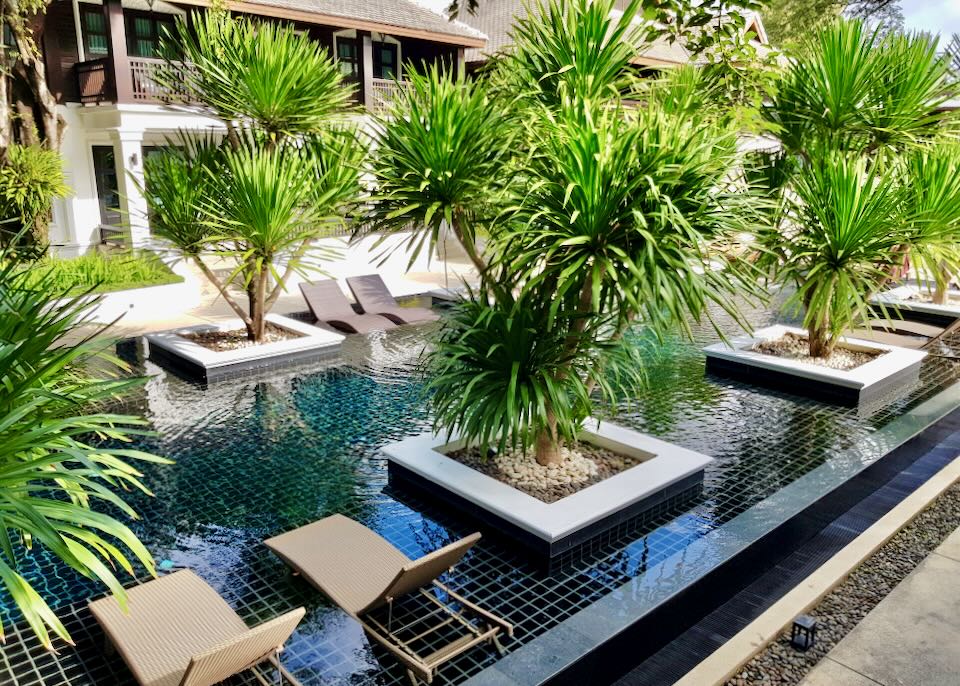
Other hotel pools may be bigger and flashier, but the stylish design and riverside position make the pool at the Na Nirand Romantic Boutique Resort our favorite in Chiang Mai.
The 8 Best Areas in Chiang Mai for Tourists
1. Old City
Part of the ancient wall surrounding the Old City.
Most visitors want to stay in or at least close to the Old City. It’s a magnificent metropolis first built over 750 years ago but has been restored many times since. Surrounded by crumbling walls, attractive moats, and, more recently, major roads, the Old City is packed with tourist amenities and cultural attractions. It’s known for its temples and markets. This delightfully compact area is easy to explore on foot or by bicycle. Many hotels offer free bike rentals. Otherwise, rent one at a nearby shop.
The Old City is a treasure trove of ancient temples, traditional markets, and cultural attractions. The City Heritage Centre is outstanding, and the Treasury Museum offers a history lesson on Thai money.
The most popular temple in the Old City is Wat Phra Singh built in 1345 and home to a very sacred statue of Buddha.
Along every main street and almost every major corner of the Old City is a wat temple. In the large and, often, shady temple grounds is at least one golden stupa (a domed Buddhist shrine) and, often, a monastery. Temple grounds are free to enter and open all day and evening. Tourists are welcome if they behave, respect the rights of monks and temple staff, and dress modestly. Rules about not wearing shorts and sleeveless garments seem more relaxed these days. But don’t rush. Temples are places to savor. Maybe stop for a drink or meal at a food stall under a banyan tree within the grounds. Some favorite temples in the Old City are Wat Chiang Man (the oldest) and Wat Phra Singh (the most popular).
The Old City is full of quality eateries offering a variety of cuisines at reasonable prices. Most places along the main streets will be noisy and, often, busy. But there are plenty along quiet alleyways. The food stalls at the night markets are even noisier and busier.
Chiang Mai Gate Market is on the road that runs alongside the southern Old City perimeter.
Not surprisingly, most fresh produce or “wet” markets were built within the Old City well before urbanization and tourism. Visitors strolling along the narrow alleys of the Old City may stumble across small and overcrowded markets. Larger and easier to find is the bustling Chiang Mai Gate Market. It’s along the eastern part of the southern road that parallels the Old City walls. Opposite a pedestrian crossing with traffic lights, this market is also handy to anyone staying just south of the Old City. The Old City is also the best area to organize tours and outdoor activities from the numerous travel agencies.
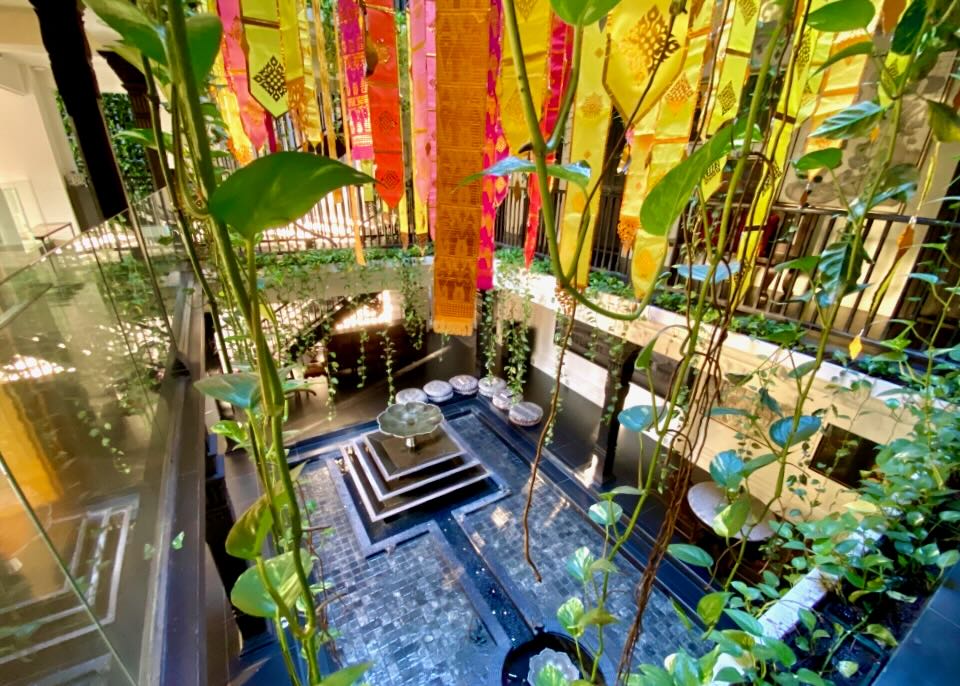
In a convenient location within the Old City, Makkachiva is one of the finest boutique hotels in Chiang Mai.
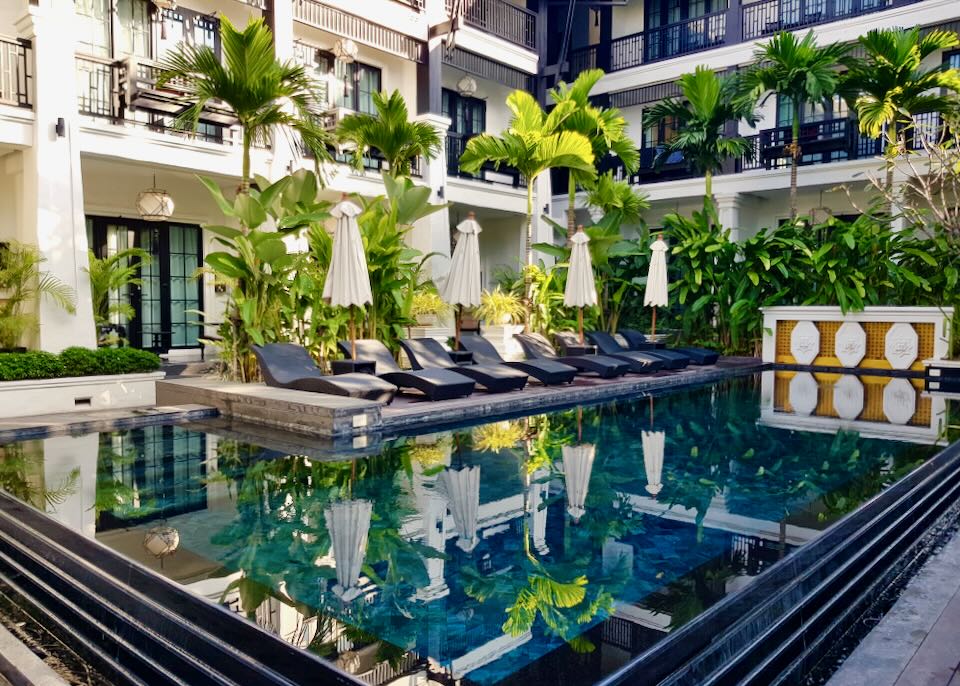
The charismatic and intimate Aksara Heritage hotel makes excellent use of its limited space within the Old City.
A few hotels are spacious, beautifully old-fashioned, and upscale, but most are small and boutique-style. There are a few simple but comfortable guesthouses along the quieter alleyways. However, there are no resorts and few options for families.
- The Best Hotels in Old City:
Aksara Heritage Hotel phone: +66 53 279 224
Rachamankha Hotel phone: +66 53 904 111
Tamarind Village Hotel phone: +66 23 011 861
Pingviman Hotel Hotel phone: +66 53 281 799- Best Boutique Hotels:
Inside House Hotel phone: +66 53 904 699
Makkachiva Hotel phone: +66 53 285 196
Phor Liang Meun Terracotta Arts Hotel phone: +66 81 881 6644
Thai Akara Hotel phone: +66 53 215 995
U Hotel phone: +66 53 327 000- Best Family Hotels:
Phra Singh Village Hotel phone: +66 53 272 480
Chala Number 6 Hotel phone: +66 52 010 466
The Chiang Mai Hotel phone: +66 53 278 780- Best Cheap Hotels:
Buri Gallery House Hotel phone: +66 53 416 500
Nine Smiths Hotel phone: +66 53 276 869
Suan Dok Gate Guesthouse Hotel phone: +66 63 818 1898
Arak Bed Hotel phone: +66 53 326 045
De Lanna Hotel phone: +66 53 326 2782. South of the Old City
One attraction of staying just south of the Old City is the food market set up every evening. It is along the southern perimeter road and opposite the Chiang Mai Gate Market.
The area immediately south of the southern perimeter of the Old City is quiet yet convenient. With narrow streets lined with (mostly) middle-class homes, the district, generally known as Hai Ya, is a slice of inner-city, suburban life. It’s almost like a village. Facilities are more for locals than tourists, which adds to the charm.
Thai food is available for rock-bottom prices at the food market between the moat and road along the southern edge of the Old City.
All accommodations are pleasant family-run guesthouses and hip boutique hotels. It’s only a few minutes’ walk from all the attractions in the Old City. This area is handy to the airport (but rarely affected by plane noise) and to public transportation, which, as explained earlier, is disappointingly inadequate.
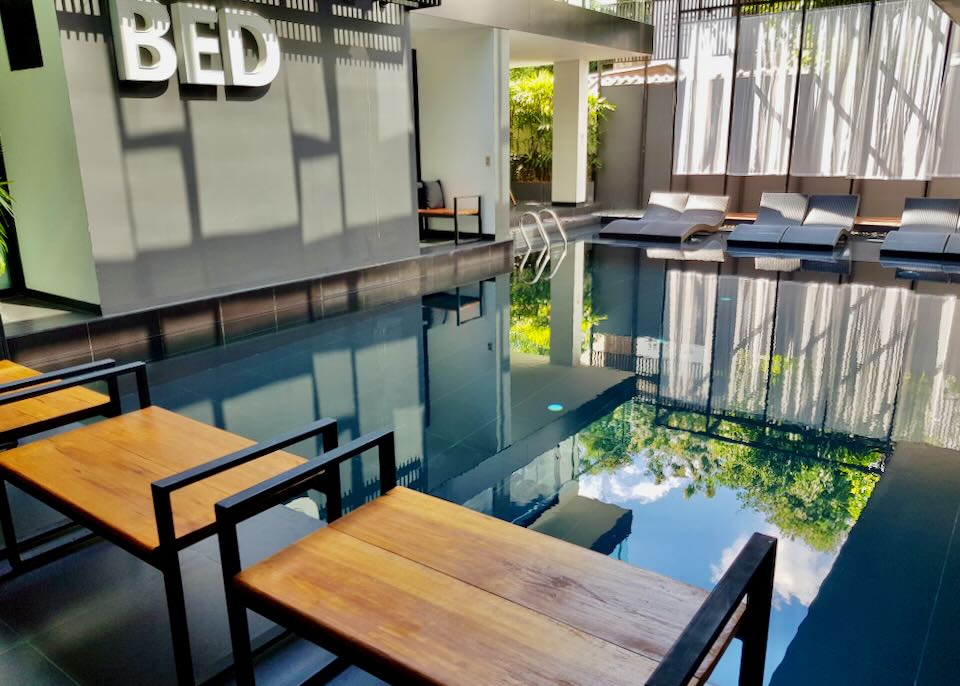
The BED Chiangmai Gate hotel makes good use of its limited space.
- The Best Hotel South of the Old City:
Smile Lanna Hotel phone: +66 53 282 899- Best Boutique Hotels:
Nampiangdin Hotel phone: +66 53 275 751
C Hotel phone: +66 61 629 5856
Nuan Hotel phone: +66 62 924 6544
At Ease Bijou Hotel phone: +66 53 279 152- Best Family Hotels:
Nanta Glam CM Hotel phone: +66 81 830 2635
De Wualai Hotel phone: +66 53 274 224
Baan Sang Singh Hotel phone: +66 86 566 5659- Best Cheap Hotels:
BED Hotel phone: +66 53 277 707
Rinn Hotel phone: +66 62 262 5468
Villa Oranje Hotel phone: +66 53 281 338
Ombra House No. 21-24 Hotel phone: +66 82 936 6081
Norn-Nanta Hotel phone: +66 53 272 241
Baan Ratchiangsaen Hotel phone: +66 53 274 7553. East of the Old City
Beautiful views of the moat, hills, and Old City from the high-rise Amora Tapae hotel just east of the Old City.
Most accommodations just east of the Old City offer more space and greenery. Some hotels are modern and high-rise, offering decent views. Others are quaint, trendy, and almost hidden along quiet backstreets. Roads need some sweeping and repairs, and it is generally noisier than south of the Old City.
But this inner-eastern region is convenient to Chiang Mai’s two main attractions: the Old City and Night Markets. It is also within walking distance of the comparatively tranquil areas on both sides of Ping River. Private, chartered, or public transportation is excellent for quickly escaping the inner city.
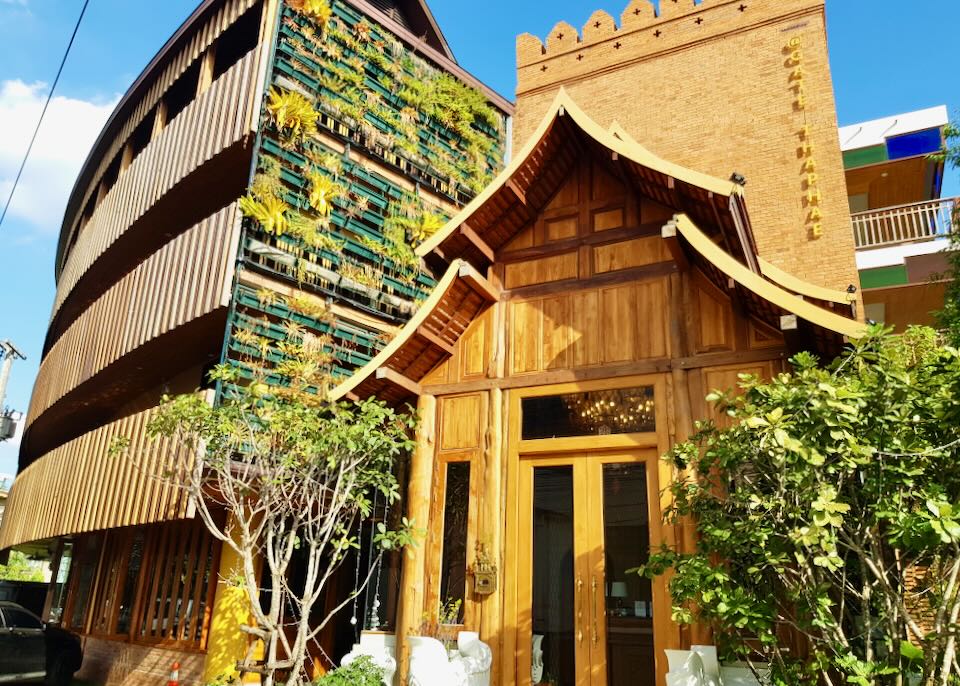
The unique architecture of At Gate Thaphae boutique hotel located along the quiet backstreets just east of the Old City walls.
- The Best Hotels East of the Old City:
THEE Vijit Lanna Hotel phone: +66 53 233 717
Away Hotel phone: +66 53 904 974
Amora Tapae Hotel phone: +66 53 251 531
MiLa Hotel phone: +66 80 142 8605- Best Boutique Hotels:
Himku Hotel phone: +66 81 444 0207
Pao Come Hotel phone: +66 88 253 6030
My Chiangmai Hotel phone: +66 53 232 344
At Gate Thaphae Hotel phone: +66 92 694 9798
De Chai The Deco Hotel phone: +66 53 273 700
Lanna Hotel phone: +66 53 281 234- Best Family Hotel:
Nidhra Lanna Hotel phone: +66 52 005 575- Best Cheap Hotels:
Bed and Terrace Hotel phone: +66 53 449 708
Chedi Home Hotel phone: +66 53 232 126
Kamala’s Hotel phone: +66 98 649 4996
imm Hotel phone: +66 53 283 999
4. Around the Night Markets
The Anusan Market (opposite Le Méridien Hotel).
The area about 1km east of Tha Phae Gate along the edge of the Old City may seem unappealing. There are abandoned malls, burnt-out shops, and closed-down hotels. But every day around 4 pm, it comes alive. Changklan Road quickly transforms into packed stalls selling clothes, souvenirs, and other items. Some areas have signs promising “beer garden,” “night bazaar,” and “food street,” but they are empty. Head directly to Kalare Night Bazaar, where stalls sell lots of tasty food at low prices. Go to Anusan Market for clothes and souvenirs. Both places are opposite Le Méridien hotel.
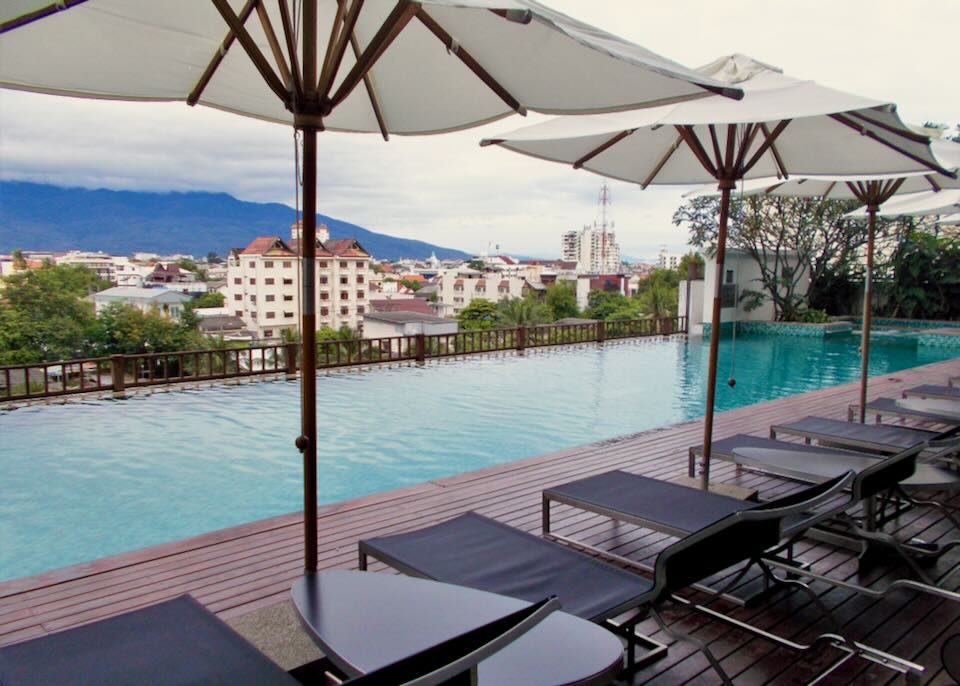
One of the most appealing swimming pools in the inner-city area is at Le Méridien Hotel.
Towering high-rise hotels provide extended views of the Old City and Ping River. They are big, with spacious gardens, large pools, and other amenities not found in the Old City. However, there’s not much for affordable accommodations.
- The Best Hotels Around the Night Markets:
Le Méridien Hotel phone: +666 53 603 333
InterContinental Hotel phone: +66 52 090 998
dusitD2 Hotel phone: +66 53 999 999
Mövenpick Hotel phone: +66 53 270 051- Best Boutique Hotels:
De Thaphae Hotel phone: +66 97 106 1940
Yaang Come Village Hotel phone: +66 53 237 222
Sridonchai Heritage Hotel phone: +66 61 269 2888- Best Family Hotel:
InterContinental Hotel phone: +66 52 090 998- Best Cheap Hotels:
Boonnark Hotel phone: +66 61 861 4884
Night Bazaar Inn Hotel phone: +66 64 495 5080
Star Hotel phone: +66 53 270 3615. Along Ping River
The brown Ping River is often used by boats.
The wide, brown Ping River is just east of the Night Markets and about 2km east of the Old City. The area along the western side of the river is comparatively quiet and safe. It’s ideal for walking, cycling, and boat trips, which are available from the back of Wat Chai Mongkhon temple.
The dragon greeting outside Wat Chai Mongkhon Buddhist temple.
A couple of adorable boutique hotels make the most of the serenity and riverside location and are ideal for a romantic getaway. Several major resorts are a few minute’s walk west of the river. They offer a pool, gardens, and family-friendly facilities rarely possible so close to the Old City. A few spacious and family-focused resorts are scattered along the western side of the river but are not within walking distance of the Old City.
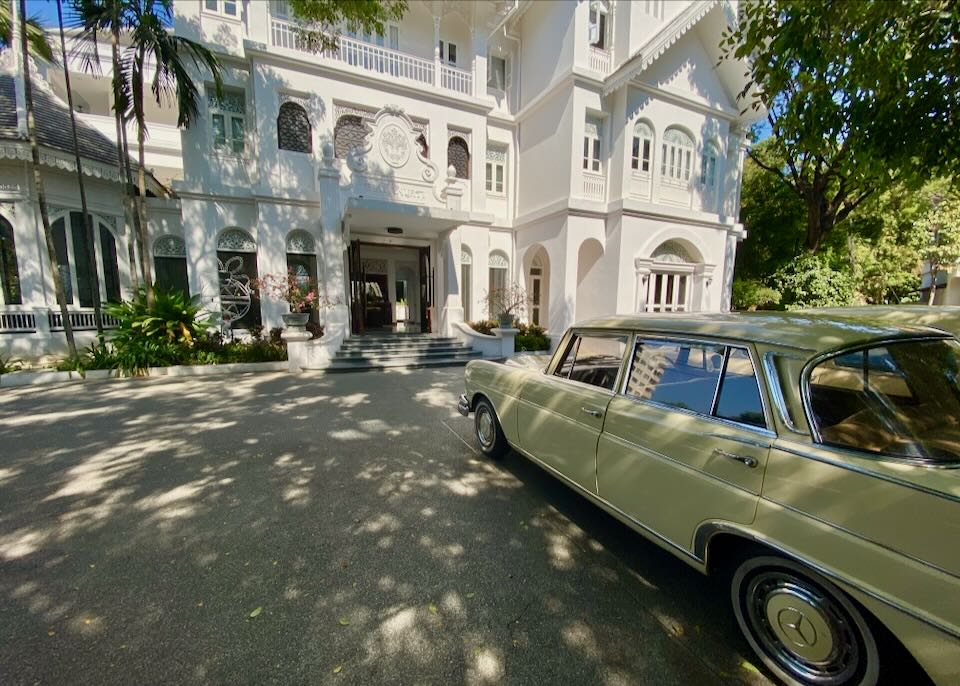
With a stunning design, amazing facilities, and tranquil location, the gorgeous Ping Nakara Boutique Hotel is our favorite hotel in Chiang Mai for a romantic holiday.
- The Best Hotels Along Ping River:
Maladee Rendezvous Hotel phone: +66 53 270 081
Meliá Hotel phone: +66 52 090 699
Anantara Hotel phone: +66 53 253 333
Shangri-La Hotel phone: +66 53 253 888
Zensala Hotel phone: +66 53 225 888- Best Boutique Hotels:
Na Nirand Hotel phone: +66 53 280 988
Ping Nakara Hotel phone: +66 53 252 999
River Art Hotel phone: +66 80 071 2946
Ratilanna Hotel phone: +66 53 999 333
Amata Lanna Hotel phone: +66 94 642 8339- Best Family Hotels:
Shangri-La Hotel phone: +66 53 253 888
Anantara Hotel phone: +66 53 253 333
Meliá Hotel phone: +66 52 090 699
Empress Hotel phone: +66 53 253 199- Best Cheap Hotels:
Ban Narai River Guesthouse Hotel phone: +66 94 612 1112
Rustic Guest House Hotel phone: +66 94 845 6843
Rustic River Hotel phone: +66 96 489 52786. Across the Bridge from Ping River
Ping River dominates the eastern part of Chiang Mai. These high-rise hotels are based around the Night Markets.
More accommodations are being built along the eastern side of Ping River. This area is easily accessible via several bridges to the Night Markets (about 750m) and Old City walls (about 2km) on foot and, even reasonably safely, by bicycle. A major bonus for some is proximity to the excellent Rimping Supermarket (Nawarat Branch), which sells fresh produce in air-conditioned comfort.
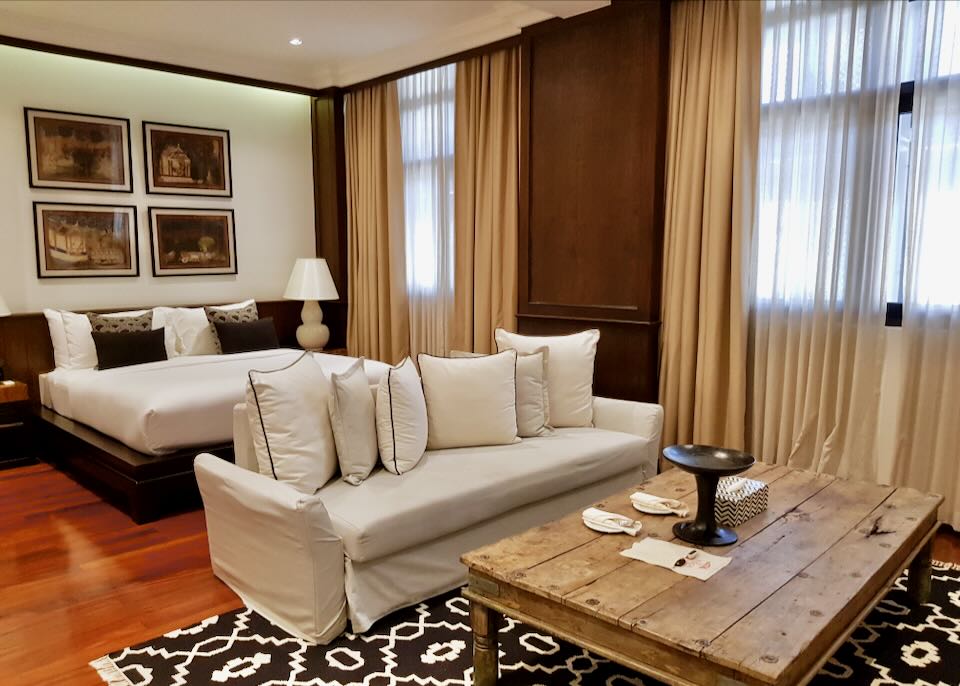
Our suite (Presidential Suite) at The Bridge An Eclectic Luxotel.
Some hotels have river views, but most are located along quiet backstreets. Most hotels are mid-priced, and there’s little to excite those traveling with children. A few resorts are spread along the far northern and southern parts of this side of the river but are not within walking distance of the Old City.
- The Best Hotels Across the Bridge from Ping River:
RarinJinda Hotel phone: +66 53 303 030
Buri Sriping Hotel phone: +66 52 001 437
137 Pillars Hotel phone: +66 53 247 788
sala lanna Hotel phone: +66 53 242 588- Best Boutique Hotels:
Liam’s Hotel phone: +66 94 739 7016
The Bridge Hotel phone: +66 53 111 551
Gategaa Village Hotel phone: +66 88 894 4777
Ping Silhouette Hotel phone: +66 53 249 999
K Maison Hotel phone: +66 52 088 818- Best Family Hotels:
Villa San Pee-Seua Hotel phone: +66 80 015 6789
At Pingnakorn Riverside Hotel phone: +66 53 249 222- Best Cheap Hotels:
Chirin Home Hotel phone: +66 53 106 066
Double Tree House Hotel phone: +66 90 329 5660
Baan Ing Ping Hotel phone: +66 53 241 848
Riverside House Hotel phone: +66 53 302 1217. Nimmanhaemin (Nimman)
The Nimmanhaemin (Nimman) district is ideal for cycling and several hotels offer free bike rental to guests.
Nimmanhaemin is a modern, vibrant, developing district only 2km northwest of Old City. Also known as Nimman. The area is divided by the namesake road that separates Chiang Mai University from the upscale homes. Ideal for first-time visitors and those traveling with children.
One Nimman shopping mall’sl fashionable boutiques and inviting cafes.
This wonderfully quiet slice of middle-class suburbia and off-campus life offers art galleries, nightlife, trendy cafés, and restaurants. It’s also close to the cultural attractions at the university. Several museums are on or near the Chiang Mai University campus, including the Chiang Mai University Art Center. The Art Mai Gallery Hotel and the One Nimman shopping mall also host art exhibits on their walls. The excellent MAYA Lifestyle Shopping Center is at the top of Nimmanhaemin Road, with a games arcade, food court, and welcome air-conditioning.
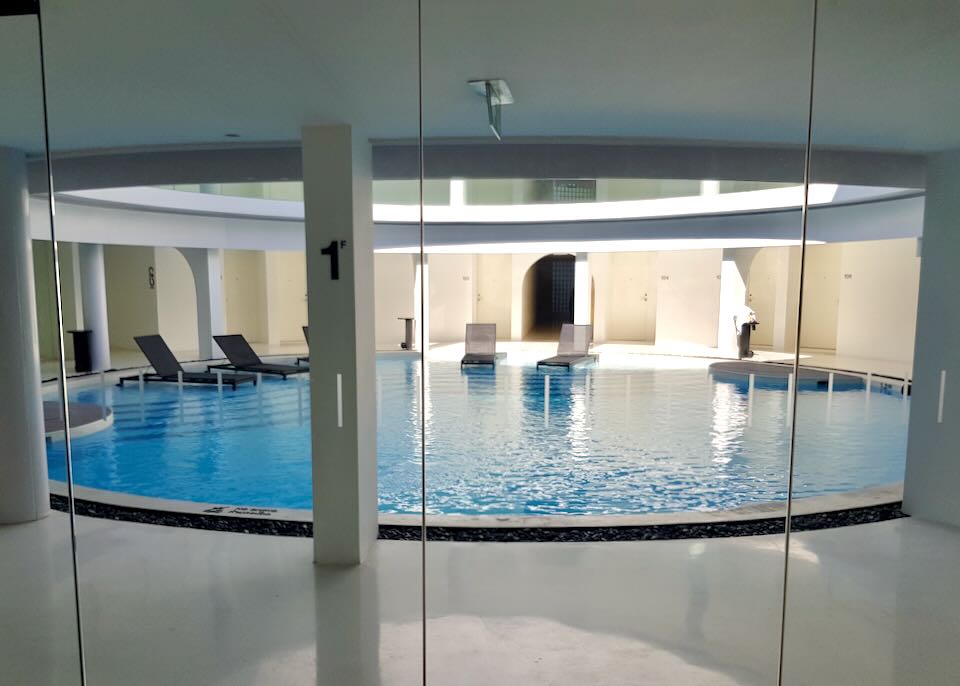
The unique design and layout of the G Nimman hotel.
Lodging is boutique-style hotels—some with bizarre designs.
- The Best Hotels Across the Bridge from Ping River:
U Nimman Hotel phone: +66 52 005 111
Sanae’ Hotel phone: +66 53 222 299
Kantary Hills Hotel phone: +66 53 222 111
Eastin Tan Hotel phone: +66 52 001 999
Peak Nimman Hotel phone: +66 53 218 265- Best Boutique Hotels:
JARITT Hotel phone: +66 88 651 4393
BED Hotel phone: +66 53 217 100
G Hotel phone: +66 52 010 111
Art Mai Gallery Hotel phone: +66 53 894 888- Best Family Hotels:
Kantary Hills Hotel phone: +66 53 222 111
Yantarasri Hotel phone: +66 53 214 368
Novotel Hotel phone: +66 52 012 777- Best Cheap Hotels:
Hotel Noir Hotel phone: +66 64 351 7007
NORN Hotel phone: +66 52 000 609
The Empire Hotel phone: +66 53 289 288
Samantan Hotel phone: +66 94 759 96198. Outside of Chiang Mai
A canopy bed with a view at Panviman Resort.
Those with more time and money may consider staying at a large resort around the hills. It’s about 15-20 minutes from the Old City by car, sometimes up to one hour. These hotels offer space, fresh air, views, and serenity that’s impossible in the Old City and rarely found elsewhere in Chiang Mai. Many are designed for families, offering discounted rates, special rooms, and engaging activities for children.
Some towns and villages like Hang Dong and Mae Rim have charming family-run guesthouses. They require an understanding of the public transportation system.
One benefit to staying outside Chiang Mai is the proximity to extraordinary outdoor activities, tourist attractions, stunning landscapes, and traditional villages. The major disadvantage is the distance to the Old City, restaurants, shops, and public transportation. Isolation may be offset by shuttle bus and taxi services offered at some resorts.
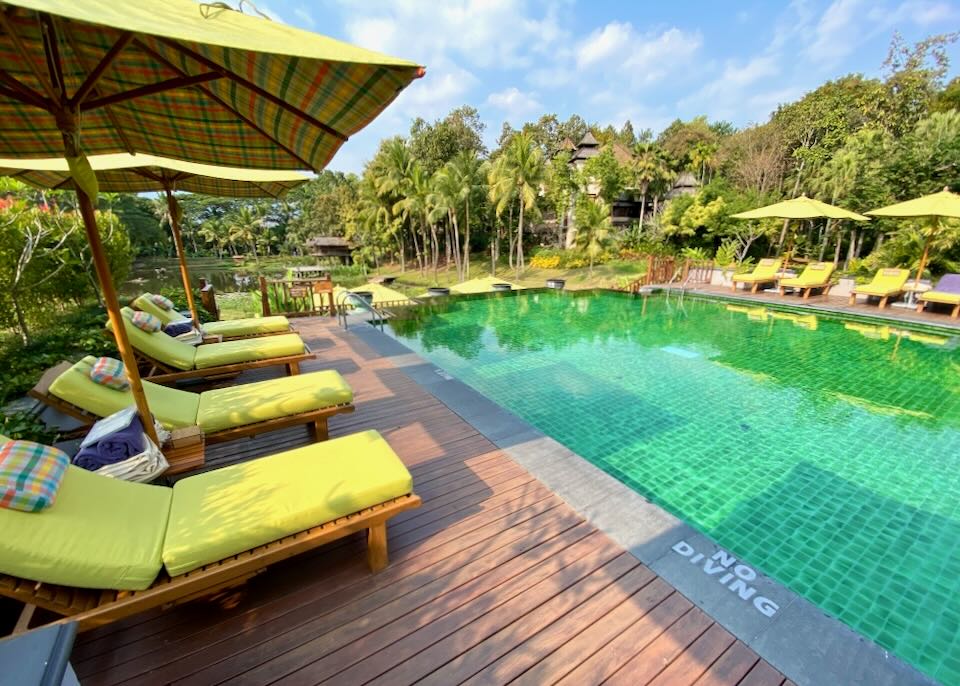
Some rooms have private pools at the Four Seasons, this is one of the main pools.
- The Best Hotels Outside of Chiang Mai:
Four Seasons Hotel phone: +66 53 298 181
Panviman Resort Hotel phone: +66 53 879 540
Veranda Hotel phone: +66 53 365 007
Flora Creek Hotel phone: +66 52 001 400- Best Boutique Hotels:
Papai Country Lodge Hotel phone: +66 81 882 7100
Hillsborough Hotel phone: +66 92 458 2999- Best Family Hotels:
North Hill Hotel phone: +66 53 333 111
Horizon Village Hotel phone: +66 53 292 381
Baanpong Lodge Hotel phone: +66 83 969 6555- Best Cheap Hotels:
Bantunglom Hotel phone: +66 81 885 0934
Baan Ping Kan Longstay Hotel phone: +66 24 304 464
Baan 88 Hotel phone: +66 61 642 5982
Rice Barn & Rooms Hotel phone: +66 81 960 3997
WE Valley Hotel phone: +66 53 010 555Chiang Mai Travel Tips
- The Chiang Mai International Airport for domestic and international flights is so close to Old City that planes can be seen but rarely heard. A taxi trip to/from the airport from most hotels in or around the Old City should only take about 10-15 minutes. It could be up to an hour if staying at a remote resort in the hills. If so, arrange airport transfers with the resort. Taxis, which never use meters, charge a set rate of 150-200 baht (US$5-6) from the airport to an inner-city hotel. Rates for a trip to the airport are usually lower but still negotiable. The best option is the ride-share app called Bolt. The closest area to the airport is just south of the Old City.
Read More
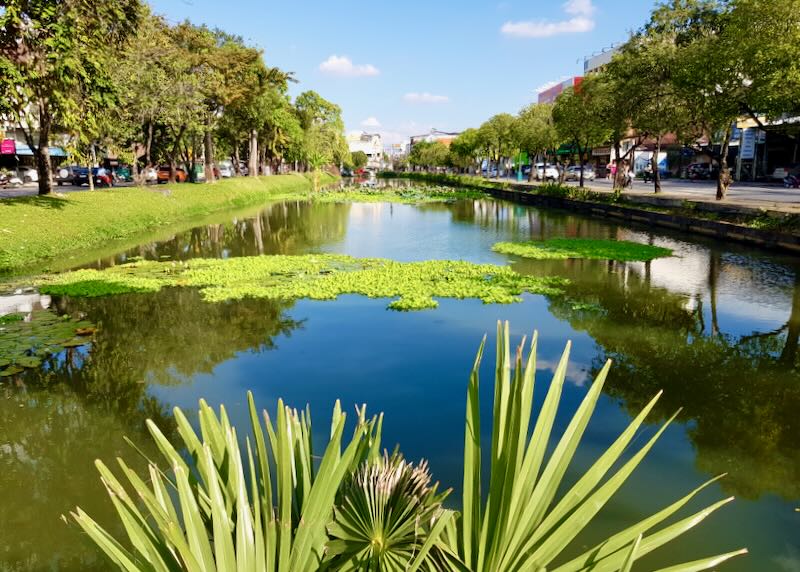
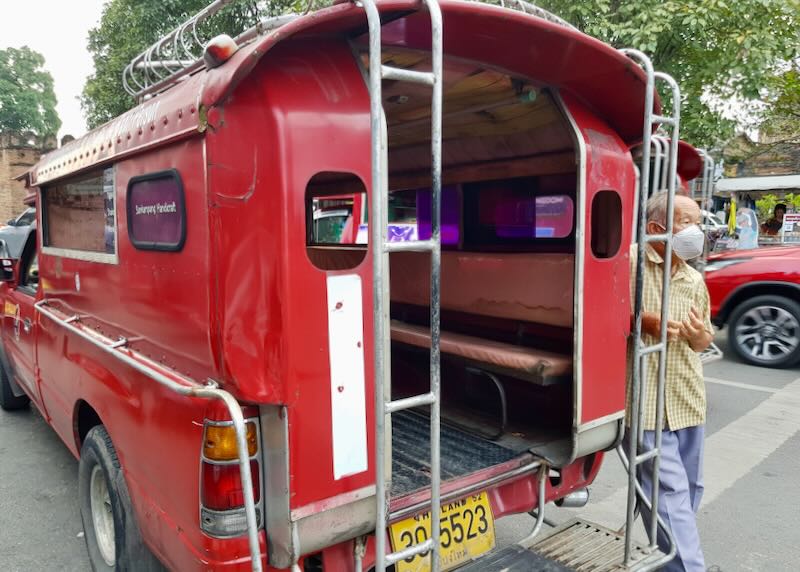
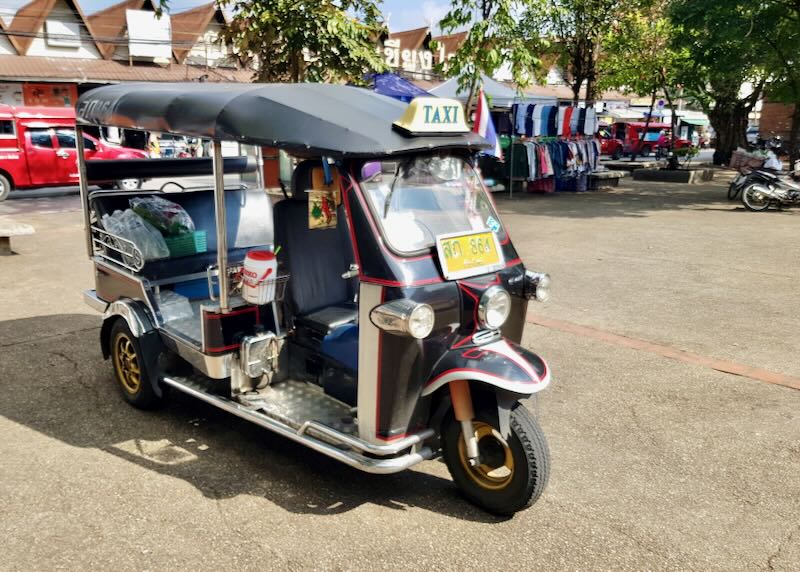
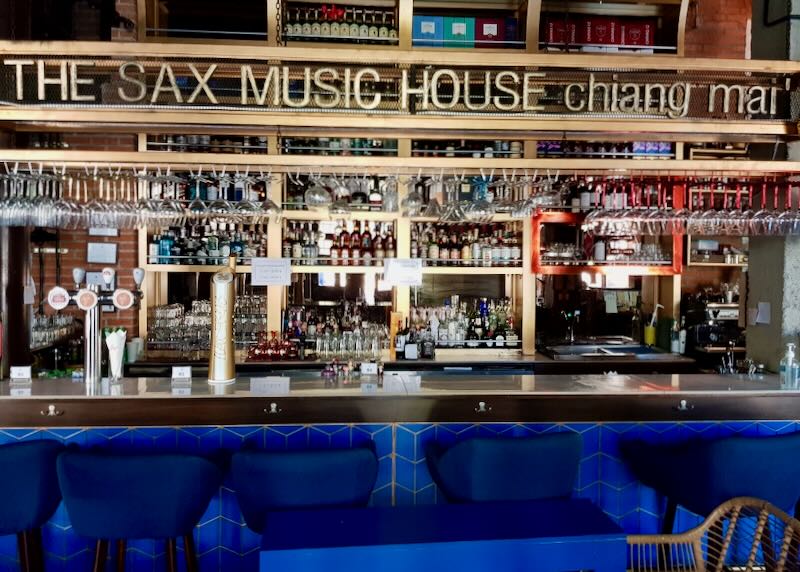
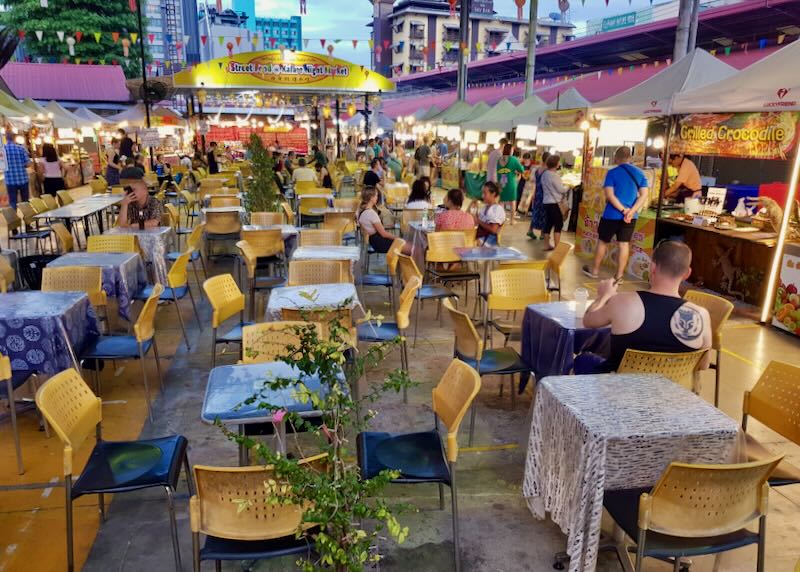
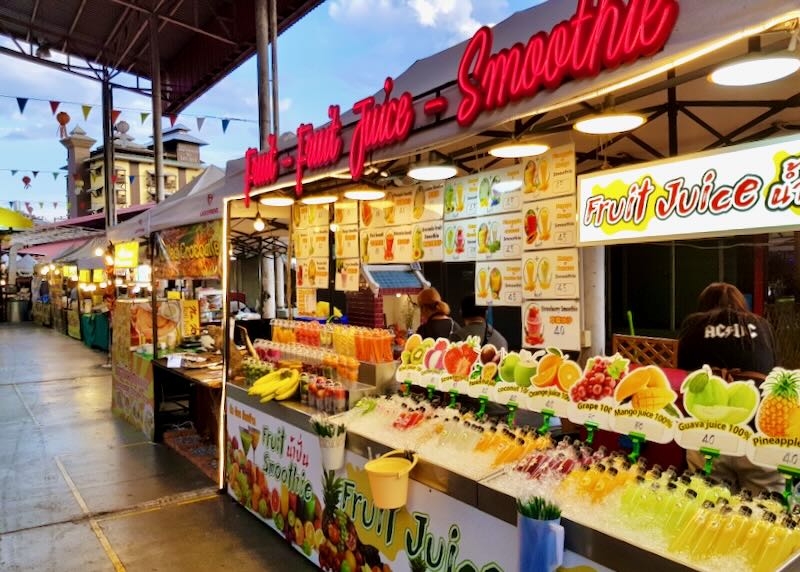
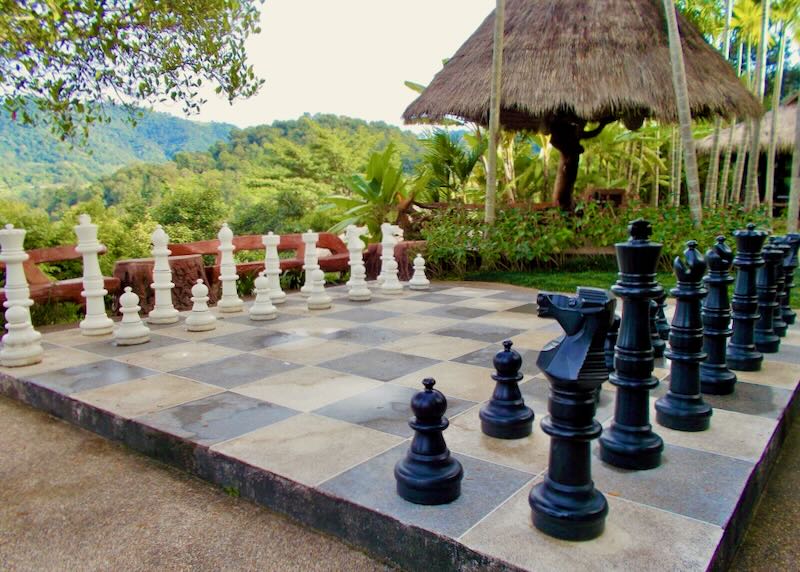
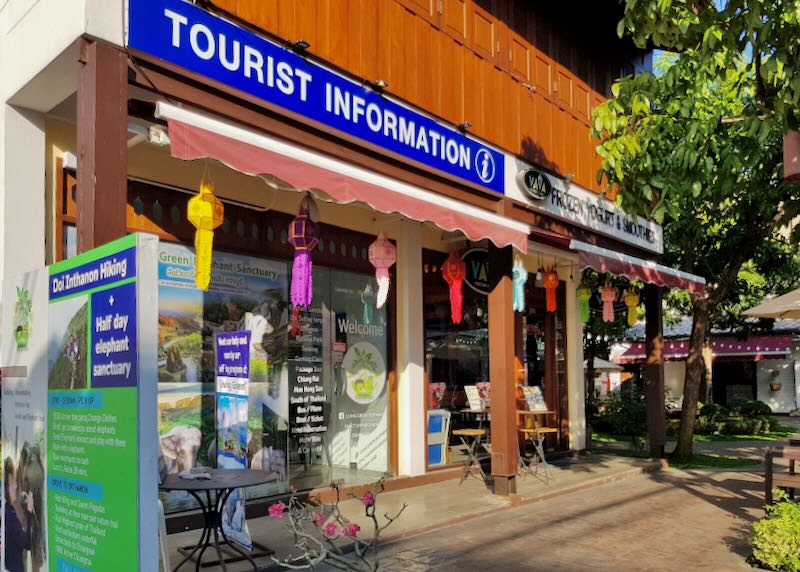
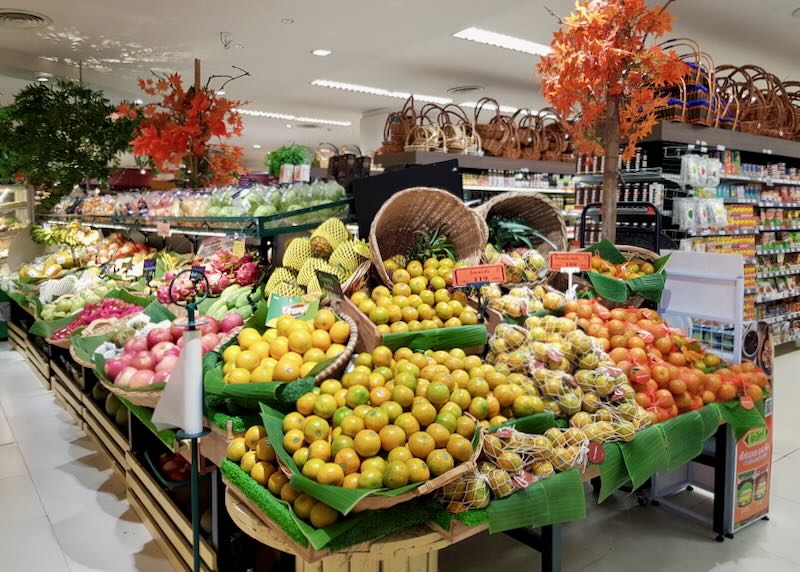
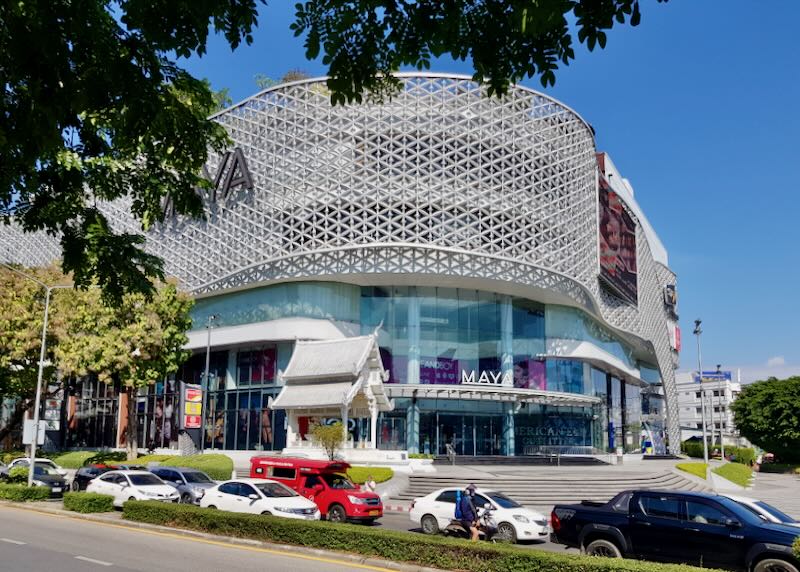
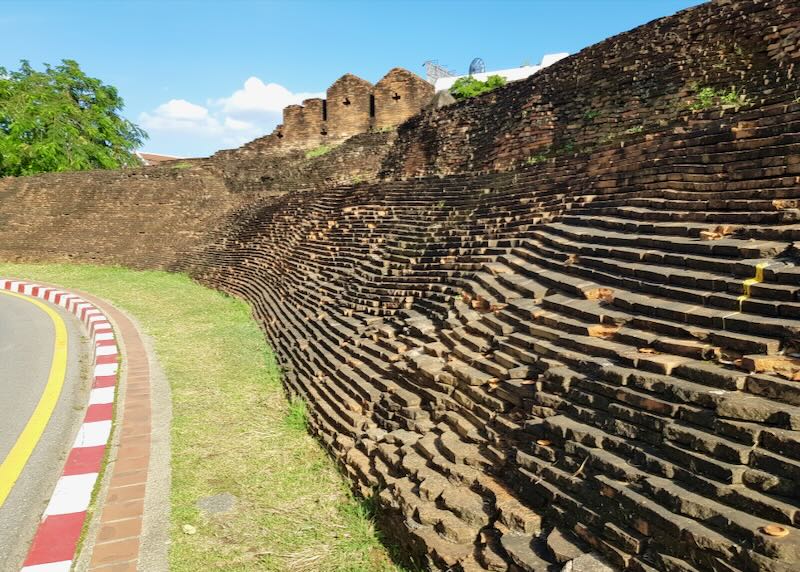
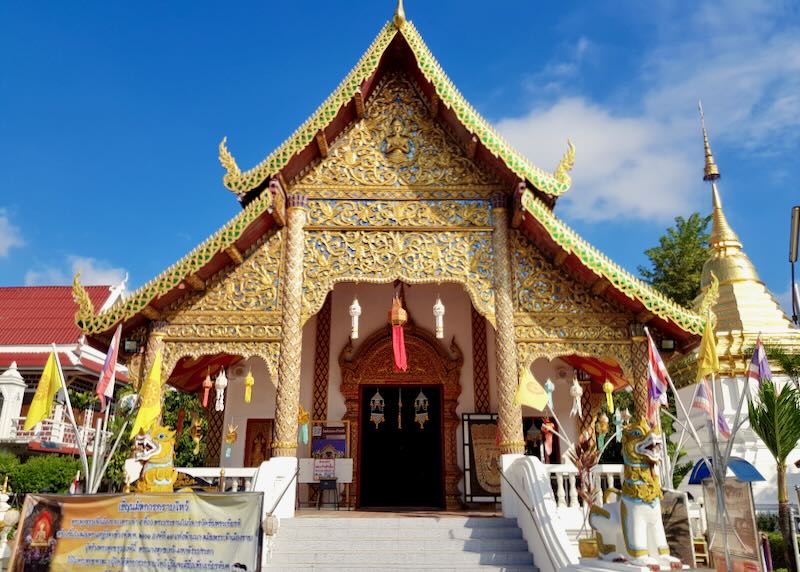
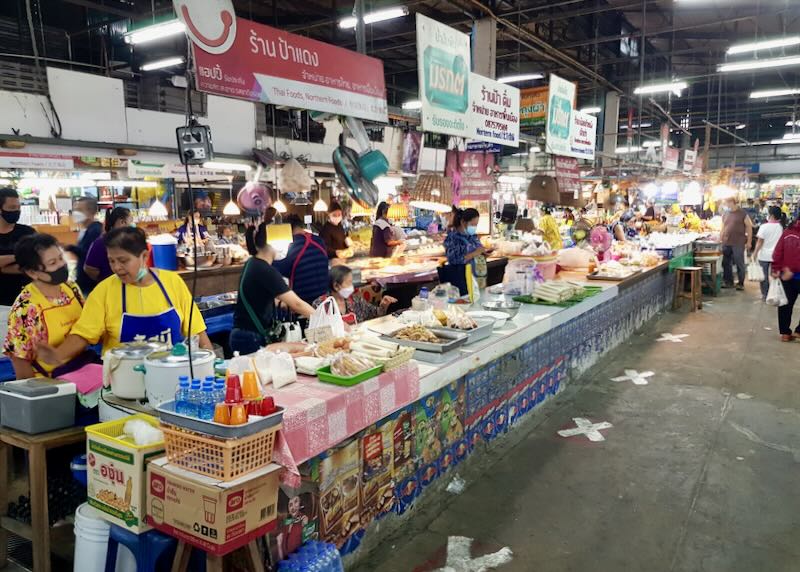
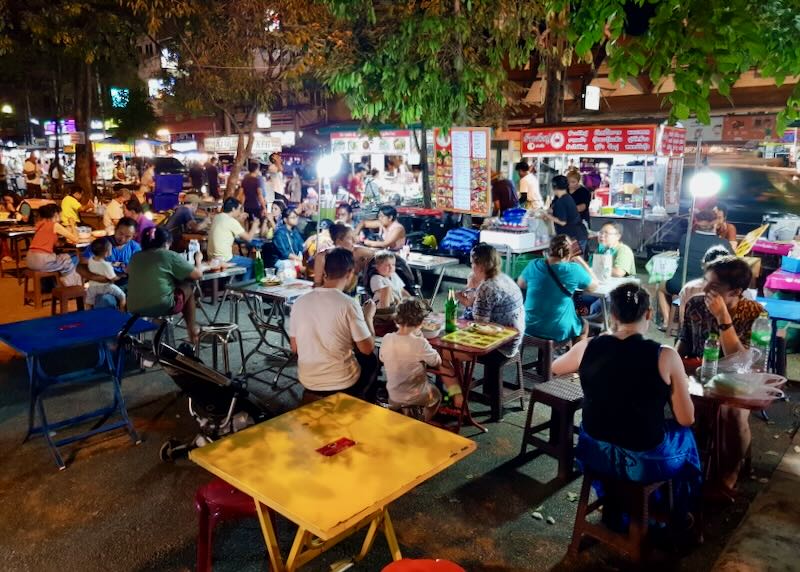
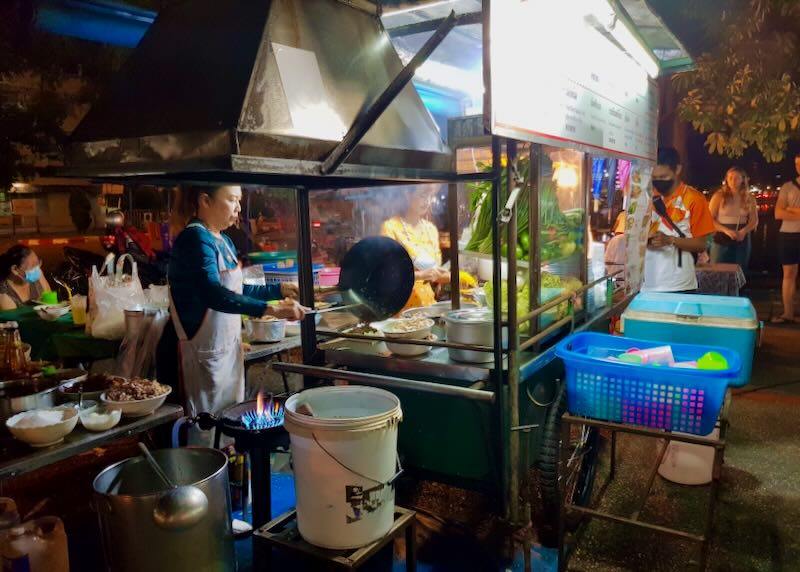
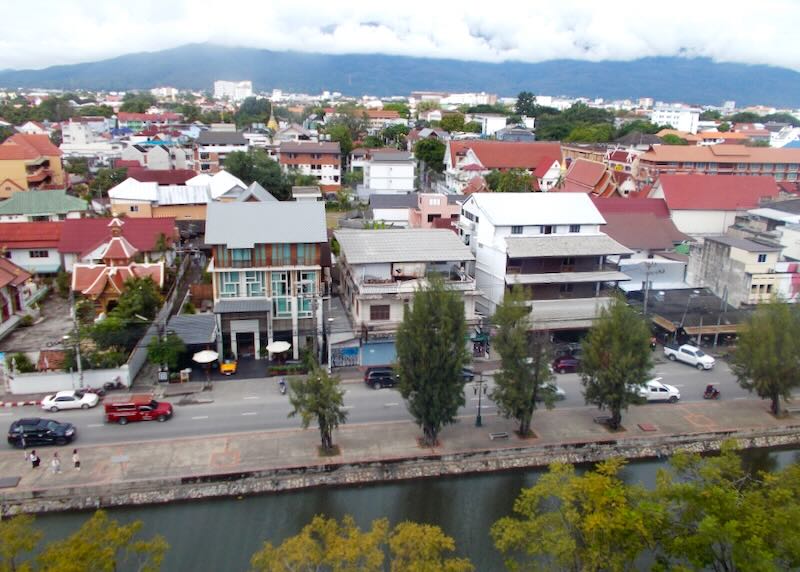
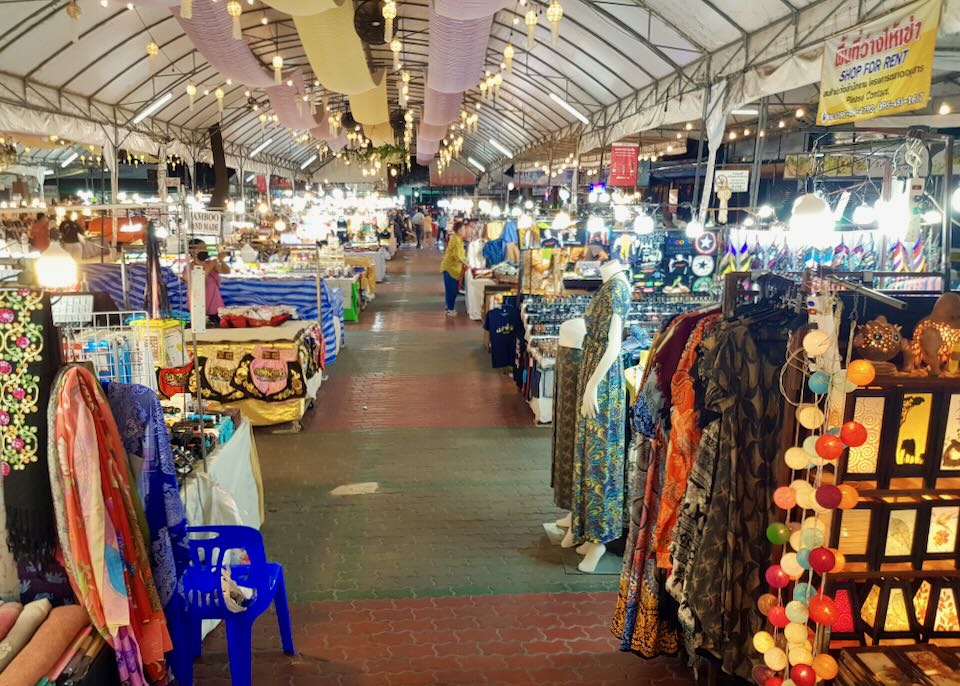
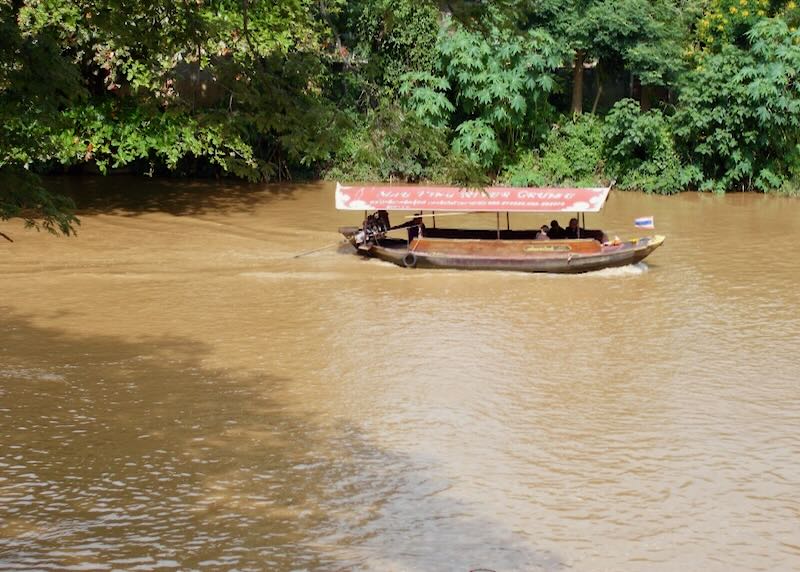
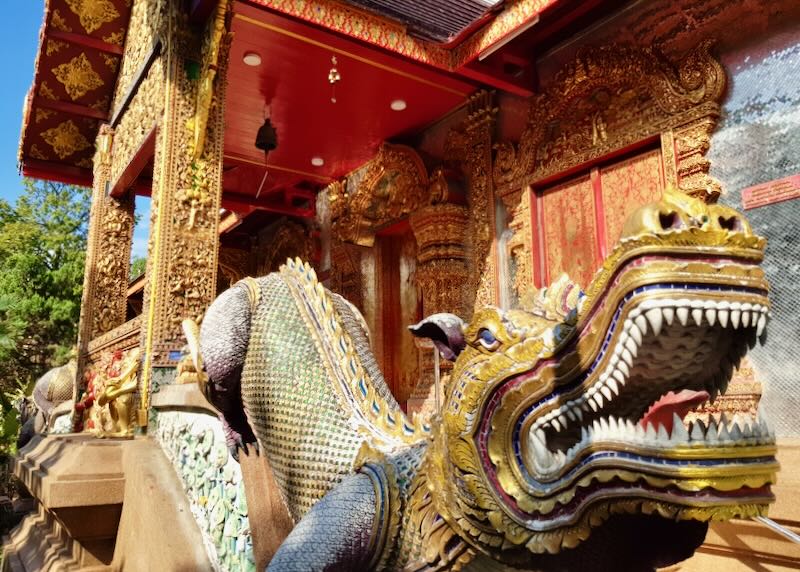
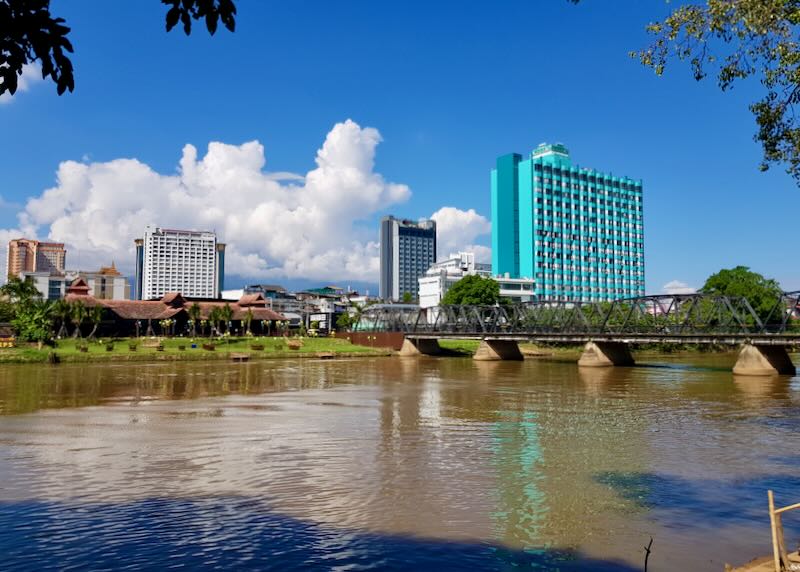
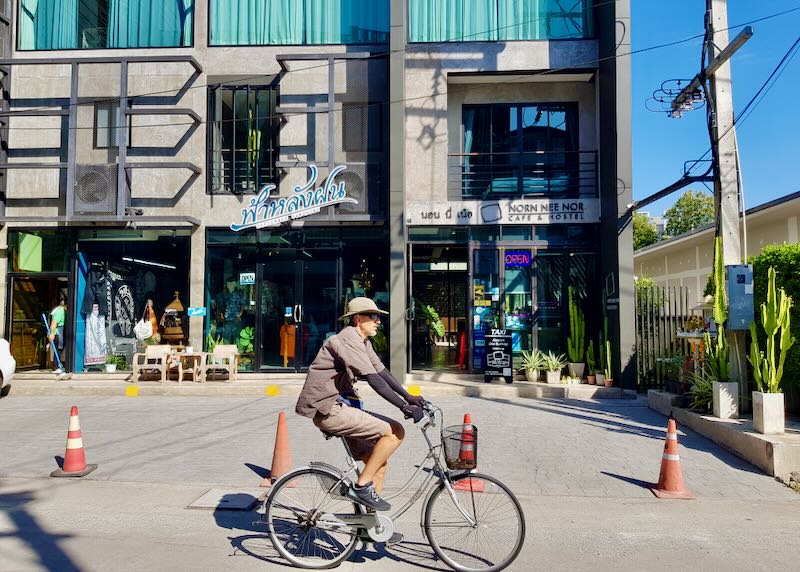
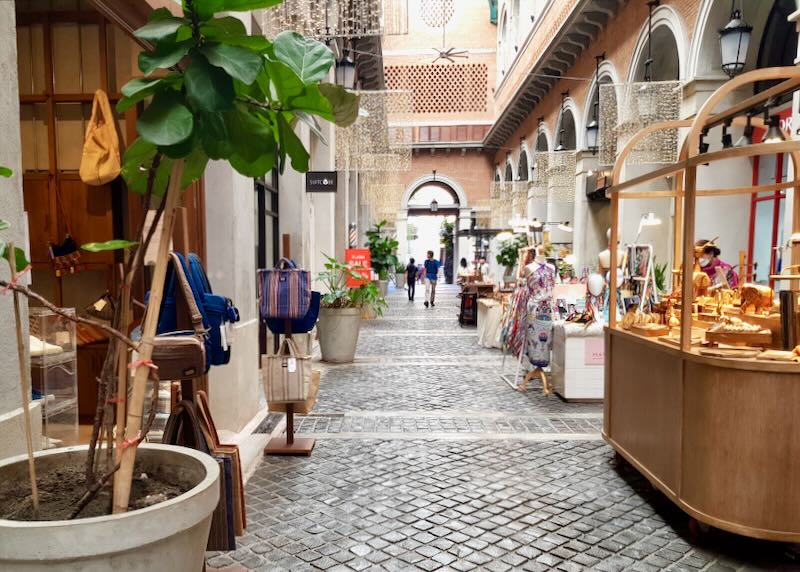
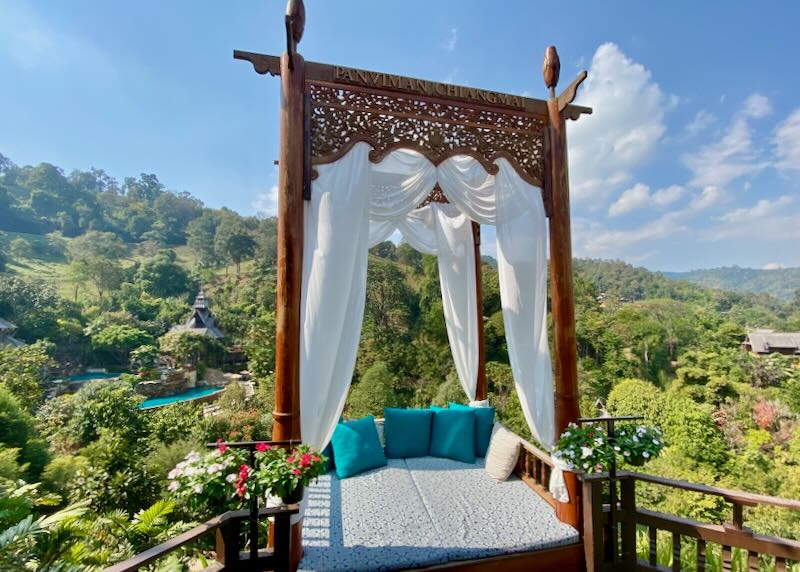
About Santorini Dave